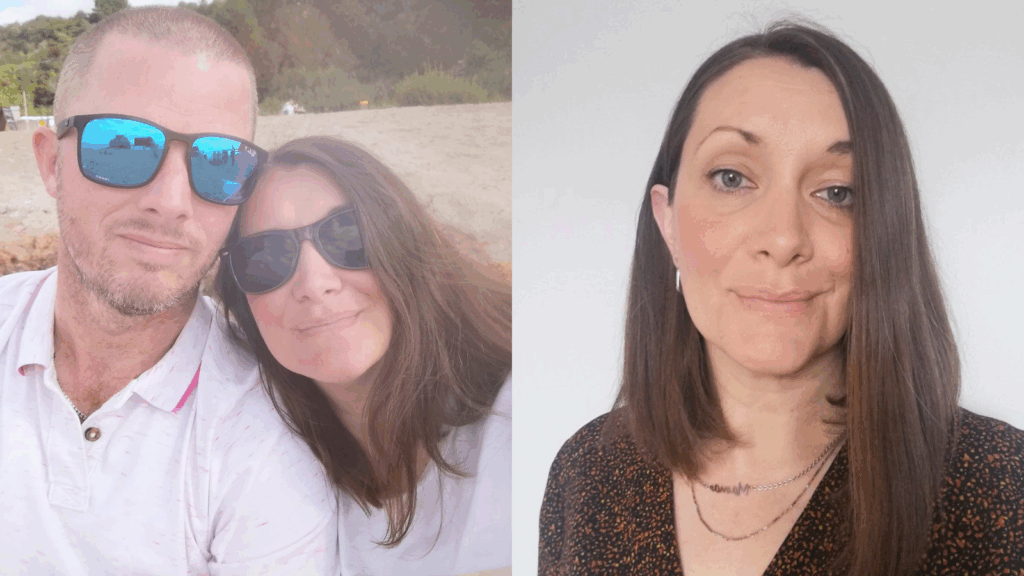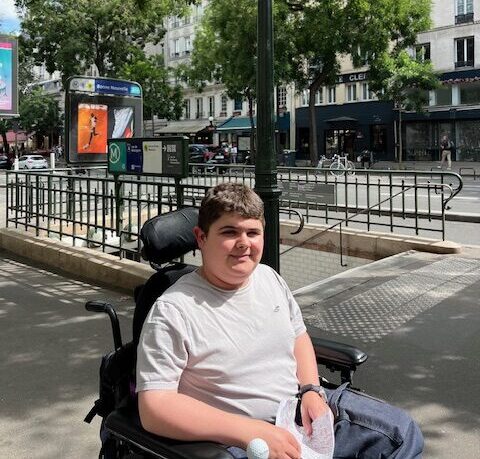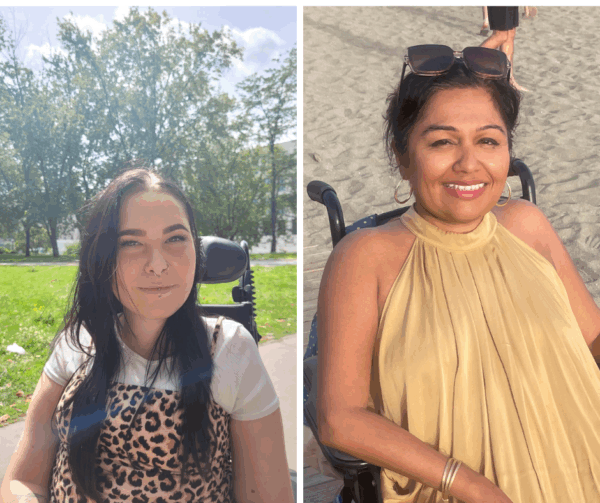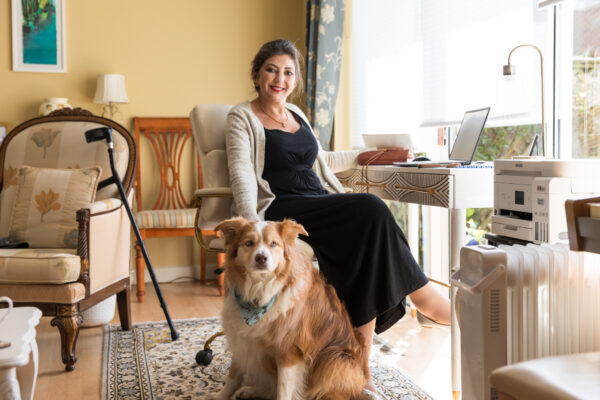Despite having symptoms for over a decade, Sarah was only diagnosed with myasthenia gravis in 2024. Now determined to help others get earlier diagnoses and feel less alone, she’s written about her condition progression whilst not knowing what was happening to her body, how she finally received a diagnosis, and the community she’s found through the charity’s myasthenia gravis support group.
Living with myasthenia gravis: my 10-year journey to diagnosis

I was diagnosed with Myasthenia Gravis in January 2024, and strangely, it was quite a relief. I can trace my symptoms back at least 10 years, to when my children were very little. I was a busy working mum with a stressful job at a local GP surgery, and at the end of each day, I would struggle to read to my girls, slurring my way through Julia Donaldson and Roald Dahl despite my best efforts. Eventually, I gave up and asked them to read aloud to me instead. My colleagues said it was probably stress, and for a while I assumed they were right.
But things didn’t feel right. My smile had changed – I looked different in photos and could only manage a grimace. People would say, “Smile, Sarah!” and I would think, “I am!” My legs lost power, and I had to pull myself up the stairs each night. Everyday experiences became uncertain. Could I enjoy that family walk? Keep up with my sister on holiday? Eat a celebratory dinner with my husband and kids without choking?
The day-to-day struggles I couldn’t ignore anymore
“Then in my early 40s, it seemed plausible when a friend suggested my muscle weakness might be a symptom of perimenopause. My doctor agreed, and I started hormone replacement therapy (HRT). But it wasn’t the answer.”
By summer 2023, things got worse. I drove 300 miles to visit my best friend with my girls in the car — and had to hold one eye open while driving. It was terrifying. At dinner during that holiday, I couldn’t chew my food. I knew something was seriously wrong, but by then, I had become an expert at masking my symptoms, even from the people I loved most.
Back home, simple tasks became impossible. I couldn’t chop an onion because I lacked the strength to hold a knife. Sitting on the floor meant I couldn’t get up unaided. I dropped shopping bags and the kettle. Then I fell while out shopping because my foot wouldn’t clear the kerb. I kept thinking “It’s like the messages just aren’t getting through from my brain” and imagined all kinds of unpleasant causes.
“My most distressing symptom was my droopy eyelid. I would start the day looking normal, but as the hours passed, my eye would droop until I had to hold it open.”
I was so worried that people would notice, particularly at work and didn’t want them to think I couldn’t perform in my job. Around this time, I shared a series of photos with my GP, showing what I now know is a classic sign of Myasthenia Gravis. I was assessed and referred to neurology – but faced a nearly 12-month wait to see a specialist.
Taking matters into my own hands
Out of frustration and still with no idea of what was wrong, I started doing my own research. Everything pointed to Myasthenia Gravis, a rare condition I had heard of because my 80-year-old auntie had been diagnosed with it in intensive care and had never recovered. I discovered there was a simple blood test that could confirm the condition, but the GP couldn’t order it; it had to be requested by a neurologist.
By January 2024, my mum couldn’t bear to see me struggling any longer. She gave me the gift of a private blood test. It cost over £300 but finally gave me the answers I was desperate for. A clinician called with the results and confirmed I had Myasthenia Gravis. I was confused and scared – but also relieved to finally have a diagnosis.
Finding support and raising awareness
“What helped me most in those early days was finding the Myasthenia Gravis Support Group, run by Muscular Dystrophy UK. It has genuinely been a lifeline.”
This small, informal group is full of wonderful people who are happy to share their experience of living with MG. When you’re newly diagnosed, there’s information out there, but it can be overwhelming and frightening to navigate alone.
Through the group, and with the help of the team at Muscular Dystrophy UK, I’ve learned that Myasthenia Gravis is different for everyone. No two ‘MGers’ walk exactly the same path, but there are common threads, and we can learn from each other. In the group, we talk about everything from treatment options to holiday insurance. But, most importantly, it has given me the confidence to advocate for my own health and to help raise awareness.
By sharing my story, I hope others with unexplained symptoms find answers sooner – and feel less alone. I really hope that increased awareness of Myasthenia Gravis can lead to quicker diagnoses. Many patients with rare conditions like this face years of uncertainty or misdiagnosis, just as I did. Awareness days like this help more people – including doctors – to recognise the early signs and take action more quickly.


